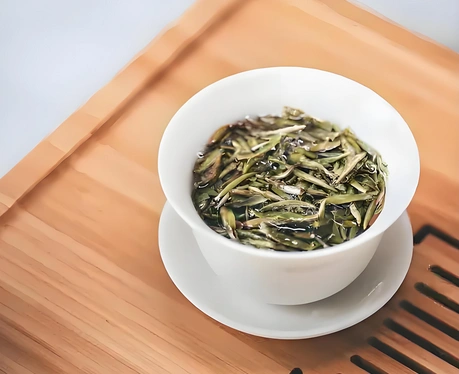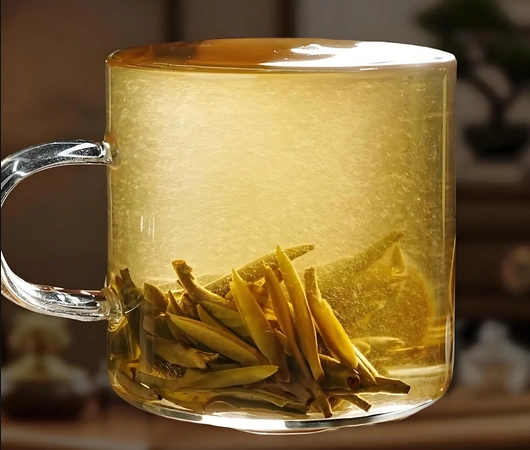white tea as coffee alternative is more than a trendy idea—it’s a mindful, healthful swap that can transform your daily routine. Imagine savoring a pale‑gold infusion instead of a dark espresso, feeling alert yet calm, your senses awakened by delicate florals rather than a jolt of bitterness. For tea lovers, office workers craving steady focus, and anyone seeking a lighter caffeine lift, white tea offers the perfect solution.
In this guide, we’ll explore why white tea makes an ideal coffee alternative, dive into its unique caffeine profile, share expert brewing tips, and unveil the wellness perks that extend far beyond energy. Ready to make the switch? Let’s brew a better day—one gentle cup at a time.
1. Why Choose White Tea Over Coffee?
Morning routines often start with coffee’s bold aroma and powerful kick. But too much coffee can lead to caffeine jitters, midday crashes, and even stomach upset. Enter white tea as coffee alternative: a brew that provides a soothing uplift without the high peaks and rapid valleys. White tea’s light processing preserves natural amino acids like L‑theanine, which work synergistically with caffeine to promote alert calm—think clear focus, not frazzled nerves. And because its flavor is subtly sweet and floral, you can enjoy it without added sugar or cream.
Beyond taste and mood, white tea is lower in tannins than black tea, making it gentler on sensitive stomachs. If you’ve ever experienced heartburn after your morning latte, white tea’s lower acidity can be a welcome relief. Plus, swapping one or two cups of coffee for white tea can reduce your daily caffeine intake by up to 50–60%—enough to help you sleep better at night while still powering through your to‑do list.

2. Understanding White Tea Caffeine Content
2.1 Typical Range per Cup
A cup of white tea generally contains 15–35 mg of caffeine, compared to 95–120 mg in an 8 oz cup of coffee. This modest amount offers just enough pep to sharpen your senses without overloading your nervous system.
2.2 Factors That Influence Caffeine Levels
- Harvest Season & Leaf Type: Early spring buds (e.g., Silver Needle) pack slightly more caffeine than later-harvested leaves (e.g., Shou Mei).
- Brewing Temperature & Time: Steeping at 175°F (80°C) for 3 minutes yields a gentler cup; hotter water or longer steeps draw more caffeine.
- Leaf Quantity: Using more tea leaves increases caffeine; a standard teaspoon (2 g) per 6 oz water balances flavor and lift.
By adjusting these variables, you can tailor white tea caffeine content to your needs—whether you want a mild morning buzz or a lighter afternoon lift.
3. White Tea Caffeine vs. Coffee: The Gentle Comparison
In a direct showdown, white tea caffeine vs. coffee highlights why tea can be a smarter choice for sustained focus. Coffee delivers a quick spike: you feel energized, but two hours later, you might crash. White tea, with its lower caffeine and L‑theanine, provides a steady plateau of alertness. One study found that participants who consumed tea showed improved attention and mood stability, thanks to this unique synergy (Sang et al., 2010; link).
Moreover, white tea’s hydrating base—over 98% water—helps your body stay refreshed. Coffee, being mildly diuretic, can contribute to dehydration if consumed in excess. For people prone to midday slumps, replacing one of three coffee breaks with white tea can maintain performance without the crash.
4. Benefits Beyond Caffeine: Health & Wellness
4.1 Antioxidants and Metabolism
White tea is rich in catechins and polyphenols—powerful antioxidants that protect cells from damage. Research shows these compounds may boost metabolism and support healthy weight management (Boschmann et al., 2013; link). By making white tea your coffee alternative, you’re also sipping your way to better metabolic health.
4.2 Digestive and Immune Support
Gentle warmth and hydration aid digestion, making white tea a great sip after meals. Its antioxidants also modulate inflammation and bolster immunity—a double win during cold seasons or stressful work periods. Office workers who switch to white tea often report fewer digestive upsets and a stronger sense of well‑being throughout the day.

5. White Tea for Office Workers: Steady Energy All Day
For busy professionals, white tea for office workers is the secret to balancing focus and calm. Keep a small infuser or premium tea bags at your desk. When the mid‑morning slump hits, steep a fresh pot—not too hot, around 175°F—and sip mindfully. You’ll feel a gentle pick‑me‑up that helps you breeze through meetings without the crash that often follows coffee.
Having white tea on hand also encourages short breaks—a quick walk to the kettle, a moment to inhale the tea’s floral aroma, and a pause to reset your mind. These micro‑rituals boost productivity and reduce stress, making white tea an indispensable ally in any hectic workday.
6. Brewing Tips: Perfect Your Coffee Alternative
6.1 Water Temperature & Steep Time
- Heat water to 175°F (80°C). Boiling water can scorch leaves, creating bitter tannins.
- Steep for 3–4 minutes. This time frame offers balanced flavor and moderate caffeine.
6.2 Multiple Infusions & Flavor Layers
High‑quality leaves like Silver Needle or Bai Mudan White Peony reward multiple infusions. First brew yields delicate florals; second brings fuller sweetness; third reveals a smooth vegetal finish. Track your favorite profile and enjoy discovering each layer.

🔗 To learn more about how to make tea, check out Tanbiwencha’s YouTube video explaining how to make tea.
7. Flavor Pairings: Elevating Your Tea Experience
Pairing white tea with light bites enhances both flavor and function:
- Fruit & Nut Plates: Slices of pear, apple, or almonds complement tea’s natural sweetness.
- Herbal Accents: Add a sprig of mint or a thin slice of lemon to accentuate fresh notes.
These simple pairings turn each cup into a mini‑ceremony—far more enchanting than gulping down a latte on the run.
8. FAQs: Your Coffee‑Alternative Questions Answered
Q1: Can I drink white tea all day?
Yes—aim for 3–5 cups. With 15–35 mg caffeine each, you’ll stay alert without overdoing it.
Q2: Is white tea’s caffeine enough for morning meetings?
Absolutely. Its gentle lift and L‑theanine synergy enhance concentration, making it ideal for focused discussions.
Q3: How do I choose between Silver Needle and Bai Mudan?
Silver Needle offers pure bud flavor and slightly higher caffeine; Bai Mudan White Peony blends buds and leaves for richer taste and smoother strength.
9. Conclusion & Action Plan: Make the Switch Today
Switching to white tea as coffee alternative is a simple step with big rewards. Start by replacing one coffee cup with white tea each week—notice improved hydration, calmer focus, and a gentler energy curve. Stock up on high‑quality leaves like Silver Needle or White Peony, master your brewing ritual, and embrace short tea breaks to reset your mind. Over time, this mindful swap will become your new favorite ritual—fueling productivity, wellness, and enjoyment. Cheers to a brighter, balanced day!



